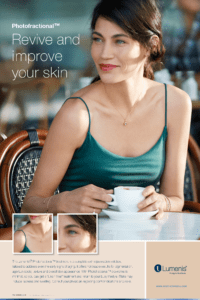Photofractional in Texas & Louisiana
At Sanova Dermatology, we pride ourselves on delivering top-tier skin care through a combination of experience, education, and advanced technology. Our team of highly experienced physicians are dedicated to providing laser treatments. We have convenient locations across Texas, including Houston, Pflugerville, Austin, Bee Cave, and Dripping Springs. We also serve Louisiana with locations in Metairie, Old Metairie, Uptown New Orleans and Baton Rouge.
If you’re looking for a way to improve the appearance of your skin, you may want to consider Photofractional therapy. This treatment combines two different techniques – IPL (intense pulsed light) and ResurFX resurfacing – to help improve the texture and tone of your skin. Photofractional therapy can be used to treat a variety of concerns, including sun damage, wrinkles, and scarring. If you’re considering this treatment, be sure to talk to a qualified provider to see if it’s right for you.
How does IPL benefit the skin?
IPL, also known as Intense Pulsed Light, is a powerful technology with many skin benefits. The device produces a powerful beam of light that penetrates the uppermost layers of skin and stimulates multiple responses from the body. IPL can improve the appearance of skin by tightening pores and reversing sun damage, blemishes, and redness; help decrease age spots, freckles, brown spots, acne scars, and stretch marks; reduce or even eliminate wrinkles or fine lines; care for rosacea breakouts; and hydrate the skin to maintain its healthiness. In conjunction with ResurFX resu rfacing treatments offered through Photofractional, you allow yourself to gain so much more from IPL treatment. With this gentle yet effective procedure, you can benefit from dramatic results in reducing wrinkles and providing a more even-toned complexion.

How can ResurFX benefit the skin?
ResurFX treatments are one of the most sought-after laser treatments available, as they can help to deeply improve the skin’s appearance. This procedure can be used on both the face and body, to reduce wrinkles and superficial pigmented lesions, while also improving texture and tone. The IPL used during Photofractional treatments aids in pushing the ResurFX to penetrate deeper into the skin tissue, while simultaneously stimulating collagen growth. This deep penetration helps to stimulate cell regeneration and reduce wrinkles, sun damage, acne scars, and enlarged pores by resurfacing the skin. With a combination of Photofractional treatments and a healthy lifestyle, you could soon have rejuvenated skin that looks younger and more refreshed!
What is Photofractional and how does it work?
Photofractional is a revolutionary new skincare technique that combines Intense Pulsed Light (IPL) and ResurFX laser resurfacing treatments to boost collagen production, refine wrinkles, and reduce the appearance of age spots and other signs of aging. Through a series of short pulse light treatments and minimal-downtime medical-grade laser resurfacing sessions, this dynamic treatment is designed to dramatically improve the overall complexion and youthfulness of your skin. IPL is used to accurately target areas where more intense collagen remodeling needs to be done while ResurFX will stimulate the underlying connective tissue levels with each subsequent treatment session. The combination works synergistically to effectively restore your skin’s natural healthy glow, tone, and texture for long-lasting results. 
The benefits of Photofractional compared to other skin treatments
Photofractional treatments combine the power of Intense Pulsed Light (IPL) and ResurFX resurfacing to create one superior, comprehensive skin treatment. Photofractional is an excellent option for addressing skin issues such as wrinkles, scars, and abnormal pigmentation, especially in comparison to other treatments, as it requires fewer treatments than most options in order to achieve desired results. It is also virtually painless and requires no time off work; you can get back to your daily routine immediately after a session. Additionally, results appear much faster than those achieved with other kinds of skin treatments and Photofractional works on both surface damage as well as deep below the skin. All these benefits make this treatment perfect for those looking for maximum results with minimal inconvenience.
How to prepare for your Photofractional treatment
Before you undergo a Photofractional treatment, there are several measures that can help you prepare for the procedure. It is recommended to avoid any sun exposure or use of tanning products two weeks before your appointment, or as advised by your dermatologist. You should also discontinue the use of any retinol or prescription topical medications four days prior to the treatment unless otherwise directed by your provider. Additionally, it is important to arrive with clean skin and makeup-free on the day of your Photofractional procedure. If redness and swelling do occur after the treatment, they typically diminish over the course of two to three days. With proper preparation and guidance from your healthcare professional, you can rest assured that your Photofractional treatment will be successful and produce desired outcomes.
What to expect during and after the treatment
Photofractional treatments are safe, quick, and non-invasive, making them an ideal choice for those who want to improve their skin’s texture and tone. Before treatment, topical numbing is applied prior to treatment and a cooling device is used during to help to ensure comfort while IPL is delivered deep into the skin. Afterward, there may be some mild redness or swelling which usually fades within 1-2 days. Results from Photofractional can include smoother skin texture, improved elasticity, and reduced signs of aging for up to two years with proper treatment and use of sun protection. Long-term results can also be obtained by repeating the treatments 2-4 times a year.
Tips for caring for your skin post-treatment
Properly caring for skin after a Photofractional treatment can go a long way to ensure optimal results. A few simple actions such as regularly cleansing, hydrating, and protecting your skin with SPF can help keep your complexion looking vibrant and healthy. Starting a skincare routine that is light yet nourishing while not over-drying the skin will help keep it balanced and prevent unnecessary irritation. Planning treatments when the sun won’t be too strong is also beneficial as exposure to the sun post-treatment can cause the skin to become extremely sensitive. To soothe any inflammation or irritation, using topical products that contain anti-inflammatory ingredients and antioxidants can reduce redness and provide an added layer of protection. Finally, following up with your beauty therapist regularly post-treatment is essential to ensure that desired outcomes are met and maintained over time. Photofractional is a unique and effective skin treatment that can provide long-lasting results with little to no downtime. If you are considering this or any other rejuvenation treatment, be sure to consult with a board-certified physician to ensure the safety and efficacy of the procedure.
Contact Sanova Dermatology
If you would like more information, or if you would like to schedule a consultation with one of our experienced dermatologists, please click here to schedule now!
